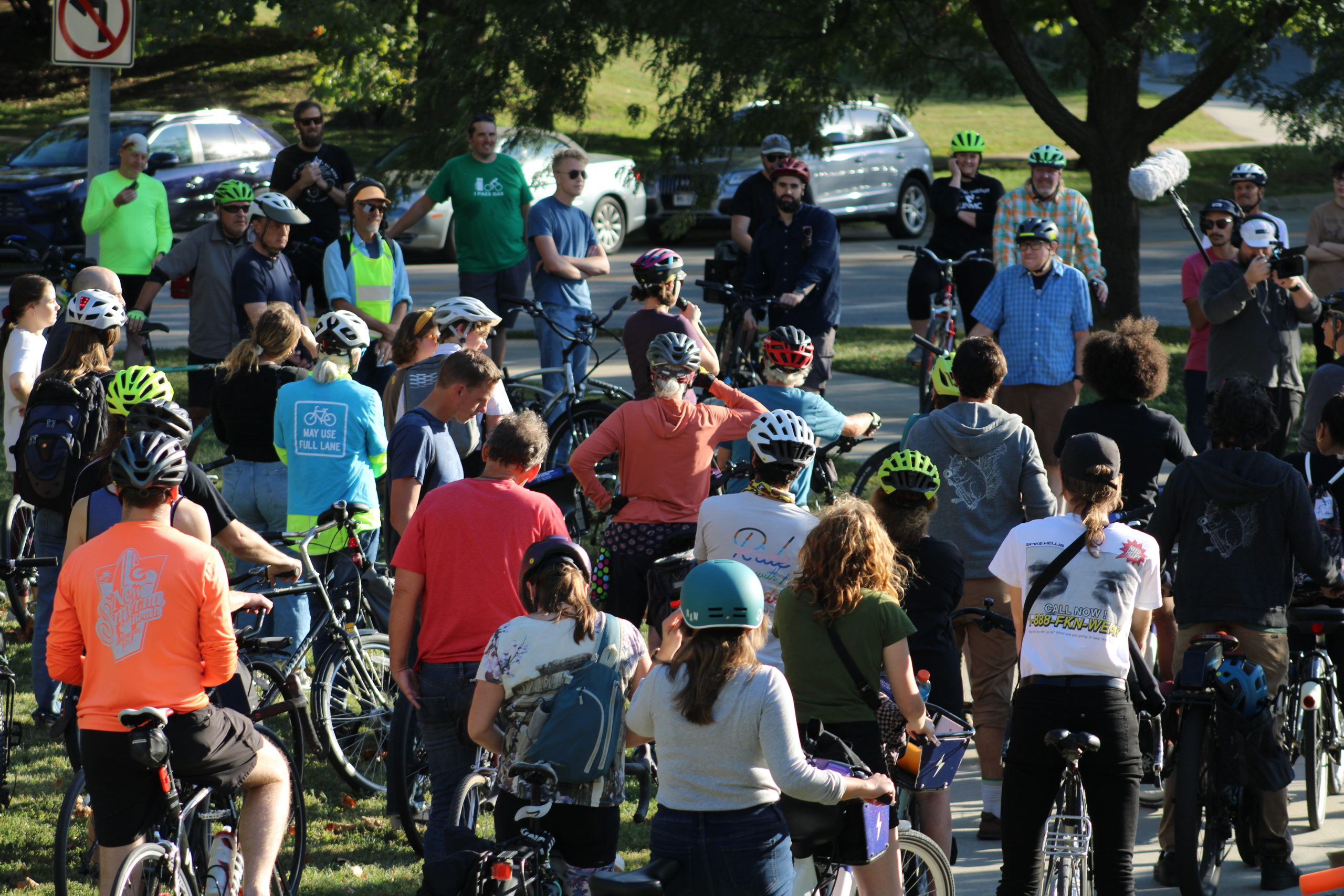There are several different types of infrastructure that cities install to benefit cyclists. Each of these have different advantages and disadvantages and will encourage a different type of rider. One of the most important things for getting people to travel by bicycle is to provide a connected network of cycling infrastructure that allow people to get where they want to go and feel safe during the journey.
Sharrow:
This is a painted marking on the roadway. There may be accompanying signage that cyclists may use the full lane. Legally, a cyclist can always use the full lane… no permission needed but this indicates to cars to be aware of cyclists. Sharrows work well in residential streets with relatively little vehicle traffic.
Studies have shown that Sharrows may actually be worse than simply doing nothing because it gives cyclists a false sense of security while doing nothing to protect them from vehicles.
https://www.citylab.com/solutions/2016/02/sharrow-safety-bike-infrastructure-lane-chicago/460095/
Pros:
- Almost zero cost (paint and perhaps a sign)
- Connect other parts of cycling network
- No additional equipment to remove snow
Cons:
- Cyclists still mix with traffic
- Rarely used by novice cyclists
Painted Bike Lane:
A bike lane is painted on the road, dedicating space to the cyclists. This is usually done with excess space in a travel lane, giving 4 feet of the existing roadway to cyclists. Cyclists no longer mix with cars but care must still be taken when cars pass cyclists in the bike lane. Further, if there is street parking, these lanes are often found in the “door zone” where a driver’s door would open into the lane.
Pros:
- Inexpensive (cost of paint)
- Easy to maintain as natural extension of street
- Effective tool to narrow an overly wide driving lane, makes the street safer
- Cyclists have dedicated space
Cons:
- No barrier between cars and cyclists
- Frequently used as parking for cars and delivery trucks
- Tend to gather road debris
- Often in the “door zone” of parked cars
Separated Cycle Lane:
This is a lane for biking that is separated from car lanes by some form of barrier. This can be a cement curb, planters, bollards, or even a lane of parked cars. By moving parked cars off of the curb to accommodate the bike lane, it creates a barrier of steel between the cyclists and the cars.
Pros:
- Cyclists fully protected from cars
- Induces all ages of riders because of increased safety
Cons:
- Requires more road space for both the lane and the buffer
- May require special equipment to plow snow in the winter
- Parking meters are further away from parked cars, sometimes leading to confusion
Cycle Track:
(Lincoln, NE – N Street Cycle Track)
In a cycle track, enough room is taken on one side of the street to accommodate bikes going in both directions. This functions like a mini street just for bikes that is parallel to the car travel lanes.
Pros:
- Fully protected from drivers
- Can provide two way cycling even if the road is one way
Cons:
- Most expensive option
- Creates issues at intersections, especially if implemented on a one-way grid
- Requires special tools for snow removal
Bike Trail
(Memorial Park)
(Elmwood Park)
(Keystone Trail)
There are many recreational trails throughout the city. These are not used for transportation as often as for pleasure or exercise. These are wider than a standard sidewalk and completely separate from any roads.
Pros:
- Totally separated from auto traffic
- Most inclusive of all riding abilities
Cons:
- Not built with transit in mind, not always connected to where you want to go
- Very expensive
- Bikes share the space with joggers and walkers


This is a really helpful thing. Thank you!